Learn the basics of aromatherapy massage: benefits, essential oil selection, beginner routine, safety tips, and how to find certified therapists.
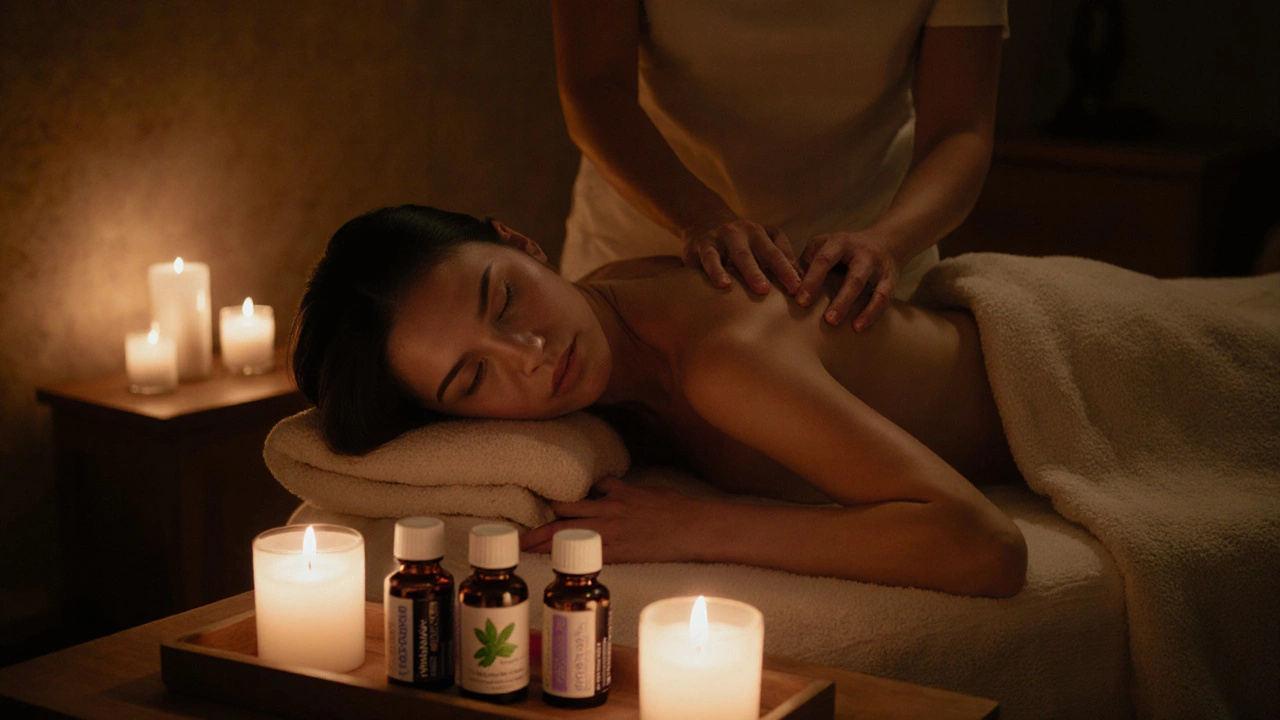
- Created by: Elara Wainwright
- Completed on: 16 Nov 2025
- Categories: Aromatherapy Massage
You’ve tried painkillers. You’ve done physical therapy. Maybe even acupuncture. But after months-or years-of living with chronic pain, nothing seems to stick. What if the answer isn’t another pill or procedure, but something simpler, quieter, and deeply human? Something that combines touch, scent, and stillness to calm your nervous system from the inside out?
What Exactly Is Aromatherapy Massage?
Aromatherapy massage isn’t just a massage with a nice smell. It’s the intentional blending of therapeutic-grade essential oils with hands-on pressure techniques to target both physical tension and emotional stress. Think of it as a two-way street: your muscles relax under the therapist’s touch, while your brain receives calming signals from natural plant extracts like lavender, eucalyptus, or ginger.
Unlike regular massage, where the focus is purely on muscle release, aromatherapy massage works on your limbic system-the part of your brain tied to emotion, memory, and pain perception. When you inhale lavender oil during a session, it doesn’t just smell good. It triggers a biological response that lowers cortisol, slows your heart rate, and reduces the intensity of pain signals traveling to your brain.
This isn’t new-age fluff. A 2021 study published in the Journal of Clinical Nursing followed 78 people with chronic lower back pain over 8 weeks. Half received standard massage; the other half got the same massage with lavender and peppermint oil. The aromatherapy group reported 37% greater pain reduction and reported better sleep quality-without any increase in medication.
Why It Works for Chronic Pain
Chronic pain isn’t just a sore back or stiff knees. It’s your nervous system stuck in overdrive. Your body keeps sounding the alarm even when there’s no real danger. That’s where aromatherapy massage steps in.
- Reduces inflammation: Oils like frankincense and turmeric contain natural anti-inflammatory compounds. Applied topically during massage, they help reduce swelling around joints and tissues.
- Calms the nervous system: Lavender and chamomile activate GABA receptors in the brain-the same ones targeted by anti-anxiety meds, but without the side effects.
- Improves circulation: Gentle pressure combined with warming oils like rosemary or black pepper boosts blood flow, bringing oxygen and healing nutrients to damaged areas.
- Breaks the pain-stress cycle: Pain causes stress. Stress tightens muscles. Tight muscles cause more pain. Aromatherapy massage interrupts this loop by triggering deep relaxation.
One woman in her late 50s from Croydon, living with fibromyalgia, told me she used to dread mornings. After just four weekly aromatherapy sessions with a blend of lavender, bergamot, and ginger, she started getting out of bed without reaching for painkillers. "It’s not magic," she said. "But for the first time in years, I felt like my body wasn’t my enemy."
Which Oils Are Best for Chronic Pain?
Not all essential oils are created equal. The right blend matters. Here’s what works best based on clinical use and patient feedback:
- Lavender: The gold standard. Reduces muscle spasms, eases anxiety, and improves sleep-critical for pain sufferers who lie awake in discomfort.
- Peppermint: Contains menthol, which creates a cooling sensation that distracts from deep, aching pain. Great for headaches, arthritis, and muscle tension.
- Eucalyptus: Naturally decongesting and anti-inflammatory. Helps with joint stiffness and respiratory-related pain.
- Frankincense: Used for centuries in traditional medicine. Shown in studies to reduce inflammatory markers in the body.
- Ginger: Warming and circulatory. Ideal for cold, stiff joints and lower back pain. Works especially well when paired with coconut or almond carrier oil.
- Bergamot: Uplifting and calming. Helps with pain-related depression and fatigue-common companions to long-term discomfort.
A skilled aromatherapist will tailor the blend to your specific condition. For example, someone with rheumatoid arthritis might get a mix of frankincense and eucalyptus. Someone with sciatica might benefit from peppermint and ginger to target nerve pathways.
How It Compares to Other Pain Treatments
Let’s be real-you’ve probably tried a few things already. Here’s how aromatherapy massage stacks up:
| Treatment | Effect on Pain | Side Effects | Long-Term Use | Emotional Impact |
|---|---|---|---|---|
| Aromatherapy Massage | Modest to strong reduction | Very low (rare skin sensitivity) | Safe and sustainable | Reduces anxiety, improves mood |
| NSAIDs (Ibuprofen, etc.) | Strong short-term | Stomach ulcers, kidney strain | Not recommended long-term | No emotional benefit |
| Physical Therapy | Gradual improvement | Muscle soreness, time-intensive | Good, but requires effort | Can be frustrating |
| Opioids | Very strong | Addiction, drowsiness, constipation | Risky, discouraged | Can worsen depression |
| Acupuncture | Variable, often moderate | Minor bruising, rare infection | Safe with regular sessions | Calming, but not always relaxing |
The big difference? Aromatherapy massage doesn’t just mask pain-it helps your body reset. You’re not fighting your nervous system. You’re inviting it to calm down.
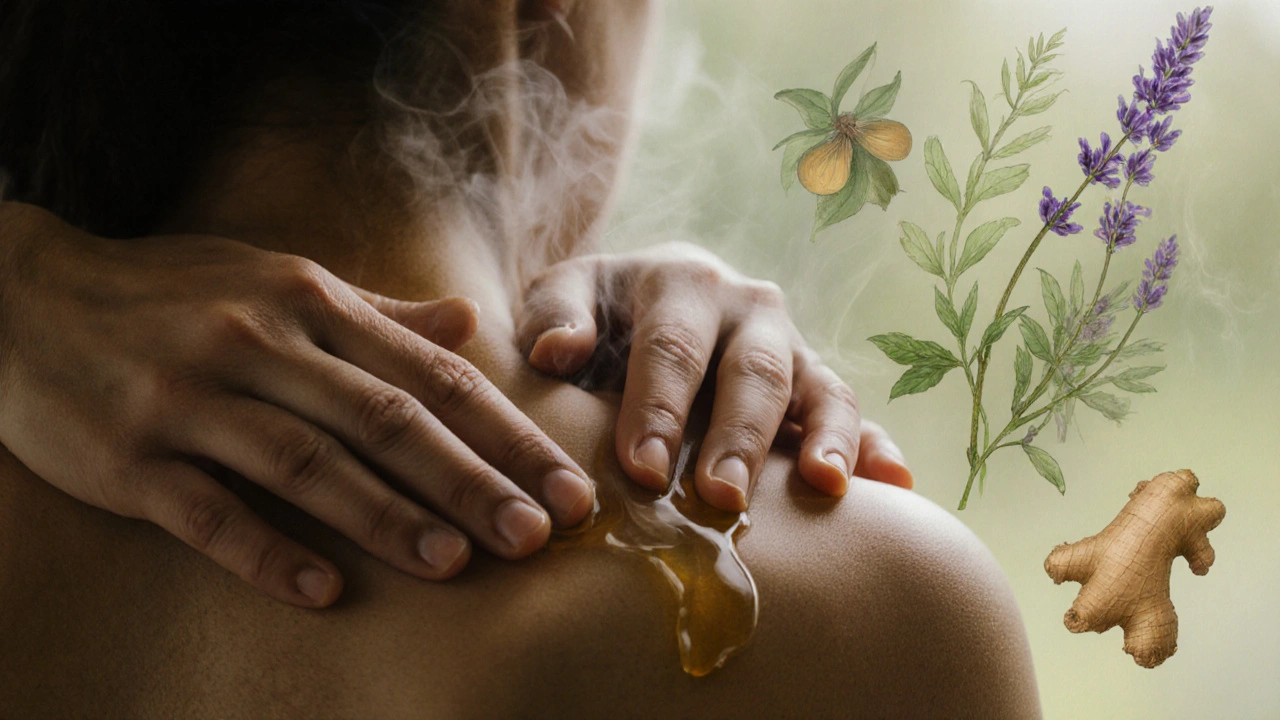
What to Expect During Your First Session
Picture this: You walk into a quiet room, soft lighting, maybe a candle flickering. The air smells faintly of citrus and herbs. You lie on a warm table, covered with a light towel. The therapist asks about your pain-where it is, how it feels, what makes it worse.
Then, they mix a few drops of oil into a carrier oil-almond, jojoba, or grapeseed-and warm it between their hands. That’s the moment you feel it: the scent, the warmth, the gentle pressure.
They won’t dig into your muscles like a deep tissue session. This is slower, more rhythmic. Long strokes along your spine. Circular motions around your hips. Gentle pressure on your temples. Each movement is deliberate, synchronized with your breathing.
Most sessions last 60 to 90 minutes. You’ll leave feeling lighter-not just physically, but mentally. It’s not a quick fix. But after three to five sessions, many people notice their pain becomes more manageable. They sleep better. They move without bracing for pain.
Where to Find Quality Aromatherapy Massage in London
London has dozens of spas and holistic clinics offering aromatherapy massage. But not all are created equal. Look for these signs of quality:
- Certified aromatherapists: Ask if they’re trained by the International Federation of Aromatherapists (IFA) or the Aromatherapy Council. Certification means they know which oils are safe, how to dilute them, and how to avoid interactions with medications.
- 100% pure essential oils: Avoid places that use "fragrance oils"-those are synthetic and won’t give you therapeutic benefits.
- Custom blends: If they use the same oil for every client, they’re not practicing aromatherapy. They’re just adding scent.
- Quiet, calming environment: Noise, bright lights, or rushed appointments defeat the purpose.
Reputable clinics in areas like Notting Hill, Hampstead, and Richmond often specialize in this. Some even offer in-home sessions if mobility is an issue. Check reviews for mentions of chronic pain relief-not just "relaxing" or "nice smell."
How Often Should You Get It?
Like any healing practice, consistency matters. Here’s a realistic timeline:
- Weeks 1-2: Once a week. This helps reset your nervous system.
- Weeks 3-6: Every other week. Your body starts holding onto the calm longer.
- After 6 weeks: Monthly maintenance. You’ll still feel the benefits, but your pain levels are more stable.
Some people with severe pain (like advanced arthritis or nerve damage) benefit from two sessions a week for the first month. Others with mild to moderate discomfort find monthly sessions enough to stay ahead of flare-ups.

Who Should Avoid It?
Aromatherapy massage is safe for most people-but not everyone. Avoid it if you:
- Have known allergies to specific plants (like ragweed if using chamomile)
- Are pregnant in the first trimester (some oils can stimulate contractions)
- Have open wounds, severe skin conditions, or recent surgery
- Are on blood thinners (ginger and cassia oils can interact)
- Have epilepsy or severe asthma (some oils can trigger reactions)
Always tell your therapist about your medical history. A good one will ask. If they don’t, walk away.
Can You Do It at Home?
Yes-but with limits. You can buy a good-quality lavender oil and mix it with almond oil for a self-massage. Rub it on your lower back or feet before bed. It helps.
But don’t expect the same results as a professional session. A trained therapist knows pressure points, breathing rhythms, and how to hold space for emotional release. You can’t replicate that with a YouTube video.
Think of home use as a supplement-not a replacement.
Frequently Asked Questions
Can aromatherapy massage replace my pain medication?
No-it shouldn’t replace prescribed medication without your doctor’s approval. But many people find they can reduce their dosage over time as their pain becomes more manageable. Always talk to your GP before making changes.
How long do the effects last after a session?
Most people feel immediate relief for 24-48 hours. With regular sessions, the duration builds. After a few weeks, you might notice your pain baseline stays lower even between treatments.
Are essential oils safe to use with other therapies like acupuncture or physiotherapy?
Yes, they often complement each other. Many physiotherapists in London now partner with aromatherapists to combine movement work with scent-based relaxation. Just make sure your providers know what you’re using.
Do I need to shower after an aromatherapy massage?
Not unless you want to. The oils are absorbed into your skin and continue working for hours. Washing off too soon can reduce their effectiveness. Many people prefer to let the scent linger as a calming reminder throughout the day.
Is aromatherapy massage covered by health insurance in the UK?
Generally, no. It’s considered complementary therapy, not medical treatment. But some private health plans (like Bupa or AXA) offer limited wellness benefits. Check your policy or ask your provider.
Ready to Try It?
Chronic pain doesn’t have to be your constant companion. You don’t need to wait for the next surgery, the next pill, the next miracle cure. Sometimes, healing comes not from fighting your body-but from listening to it.
Find a quiet room. Breathe. Let someone else hold the weight for a while. Your body remembers how to heal. It just needs the right kind of touch-and the right scent-to remember how to let go.
Aromatherapy massage combines skilled touch with calming essential oils to reduce stress, improve sleep, and ease muscle tension. Discover how this holistic therapy delivers real wellness benefits backed by science and real user experiences.
Discover why an aromatherapy massage is the perfect gift for loved ones. Learn about its benefits, how it works, types in London, pricing, and safety tips.

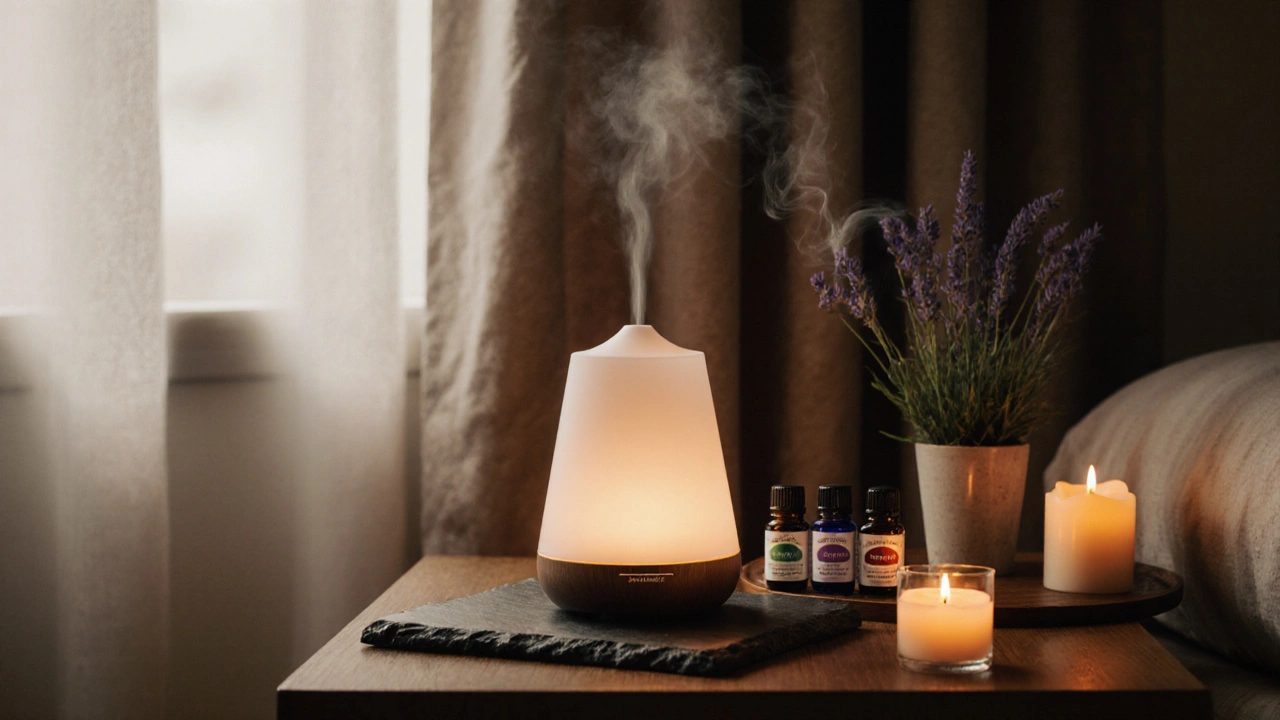
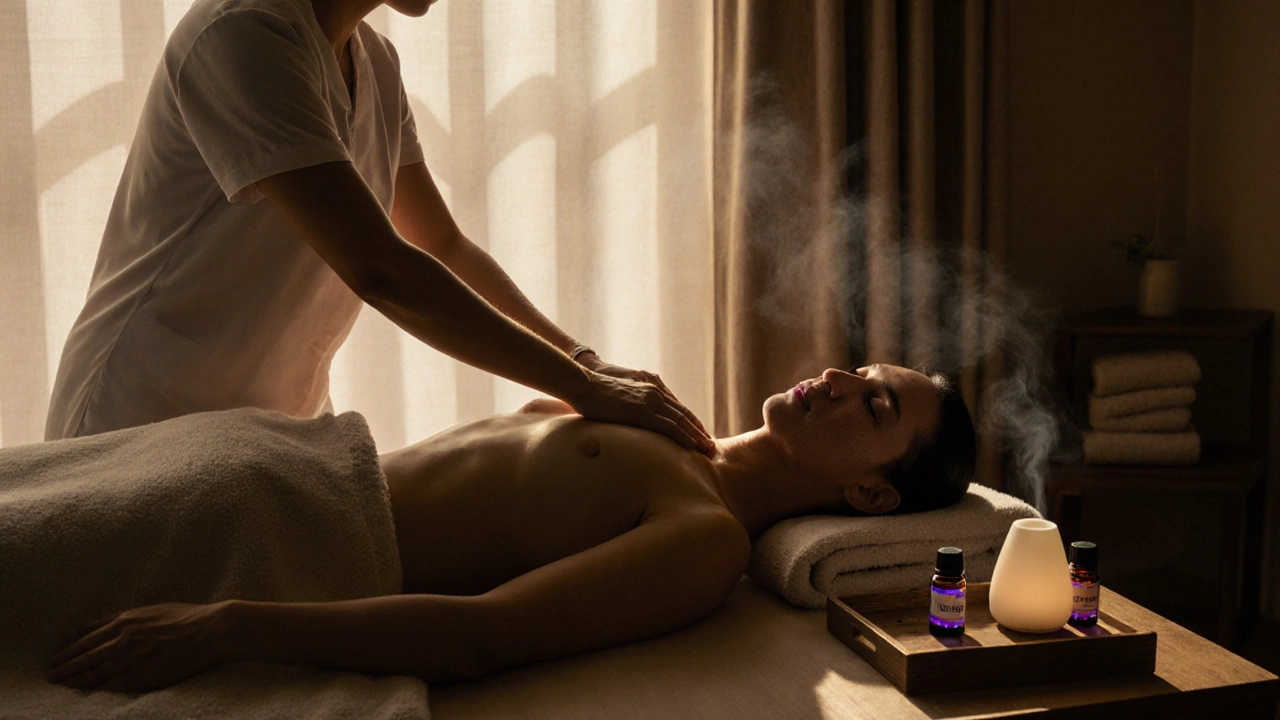
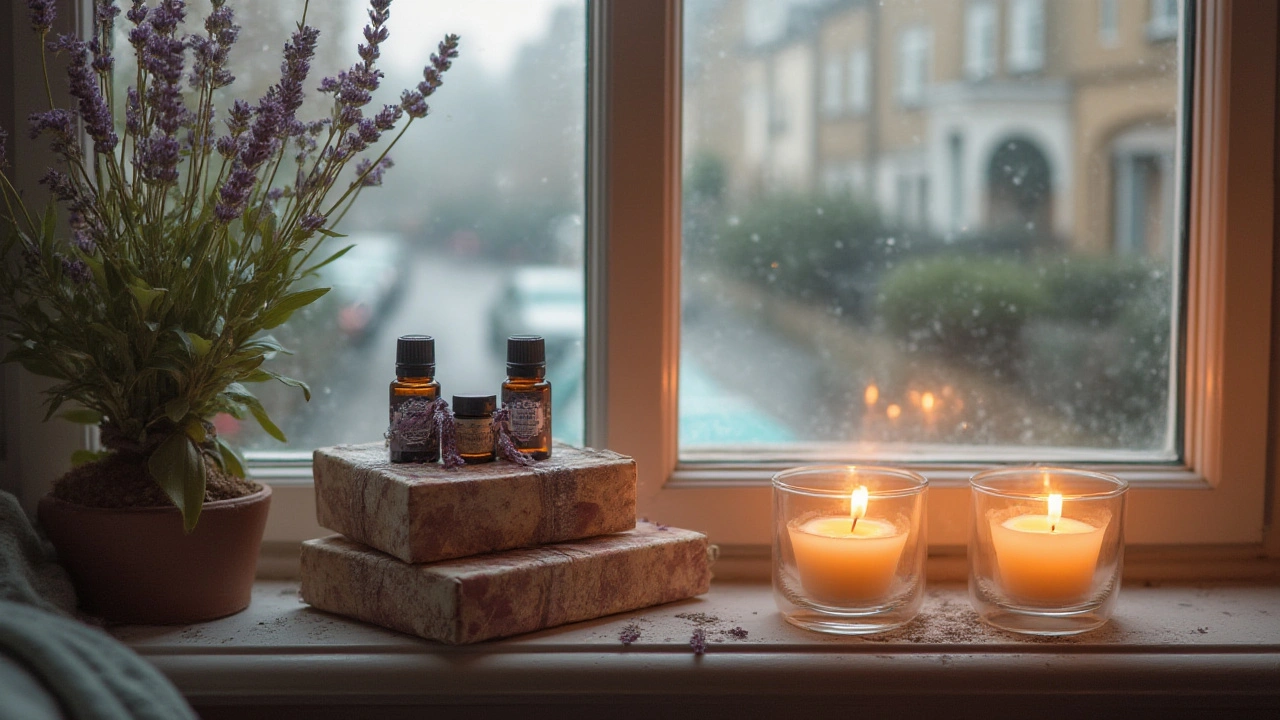
Paige Vejnar
November 17, 2025 AT 05:46This is so beautiful 😭 I cried during my first session-like, actual tears. My mom had fibromyalgia and she used to rub lavender oil on her wrists before bed. I didn’t know it was science, I just thought it was her little ritual. Now I do it too. Thank you for putting this out here.
Michael Soaries
November 18, 2025 AT 17:08Ive been doing this for 6 months now and honestly its the only thing that makes my sciatica bearable. No more midnight ibuprofen binges. Just a few drops of peppermint and ginger on my lower back before bed. I dont even need the heating pad anymore. Its not magic but its real.
Dr. Atul James Singh
November 20, 2025 AT 03:52While anecdotal evidence is compelling, the methodological limitations of the 2021 study you cited-small sample size, lack of double-blinding, and potential placebo confounding-render the 37% reduction claim statistically insignificant. The placebo effect in pain modulation is well-documented in neuroimaging studies (e.g., Wager et al., 2004). Until controlled RCTs with biomarker validation are published, this remains pseudoscientific aromatherapeutic woo.
Bryan Peele
November 20, 2025 AT 11:29Wow. Another ‘healing touch’ piece from someone who clearly thinks essential oils are the new antidepressants. I’ve got chronic pain too. I also don’t believe in magic. If you’re going to cite a study, at least give the DOI. Or better yet-don’t. This reads like a spa brochure written by someone who took a 4-hour online course.
Debbie Nehikhuere
November 21, 2025 AT 13:01Hey Bryan-I hear you. I used to roll my eyes at this stuff too. But after my back surgery went sideways and I was stuck on opioids, my PT suggested trying a session just to see. I thought it was ridiculous. But when the therapist used that ginger-coconut blend and just… held space… I didn’t realize how much I’d been holding my breath for years. It didn’t fix me. But it let me breathe again. And sometimes that’s enough.
Sean Fimio
November 22, 2025 AT 02:47Wait wait wait-so you're saying frankincense reduces inflammation?? I thought that was just for incense and monks?? 😅 I just bought a bottle of it last week after reading this and I'm gonna try it on my knees-my dog just looked at me like I'm weird though lol. Also, can someone recommend a good carrier oil? I used coconut but it felt greasy af
peter may
November 22, 2025 AT 07:18One must ask: Is the efficacy of aromatherapy derived from the phytochemical properties of the essential oils themselves-or is it the ritualized embodiment of human touch, the sacred silence, the deliberate slowing of breath, the surrender to somatic presence? In an age of mechanistic medicine, we have forgotten that healing is not merely biochemical-it is ontological. The body remembers what the mind has repressed. The oil is merely the vessel.
Vanness Latricia
November 23, 2025 AT 22:46THIS. THIS IS WHY I CRY WHEN I READ THINGS LIKE THIS 🥹 I’ve been living with lupus for 12 years and I’ve tried everything-steroids, biologics, acupuncture, cryotherapy, even a $3000 ‘pain reset’ program that did nothing. Then I found a therapist who used bergamot and lavender. The first time I left her office, I didn’t feel ‘cured’-I felt… seen. Like my pain wasn’t just a symptom to be managed. It was part of me-and I could still be gentle with myself. I’ve been going monthly for two years now. I still have bad days. But I don’t hate my body anymore. And that? That’s everything.